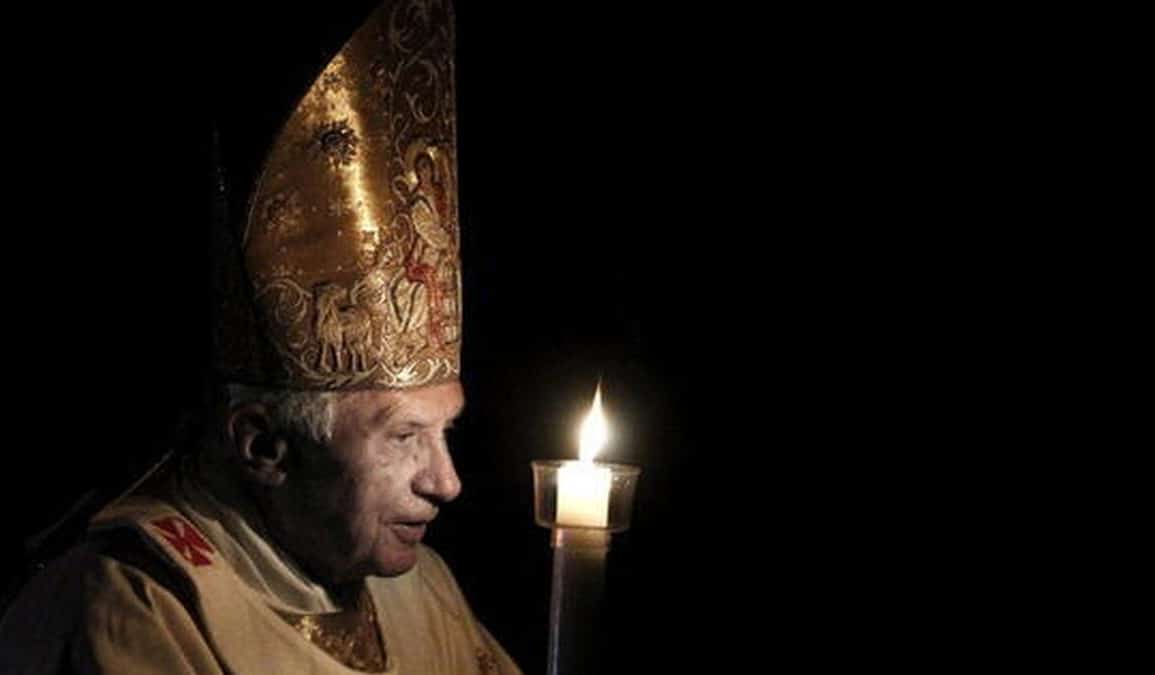Benedict XVI, that humble, simple and down-to-earth Bavarian pope of Benedictine heart and keen Augustinian intellect, lover of Classical music and sacred liturgy, and of everything beautiful and good in this world, has died. Residing in the Vatican since 1981 and long a firm guardian and defender of the Catholic faith, Ratzinger was the closest collaborator and the perfect complement to Saint John Paul II, whom he succeeded in 2005 more by the will of his cardinal electors than by his own design.
His would be a pontificate full of lights, but also shadows. Among those lights was the implementation of the Second Vatican Council, three magnificent encyclicals, his fruitful magisterium opposing the perils of moral relativism and defiant secularism, a fostering of ecumenism and interreligious dialogue, a staunch defense of human rights and a firm cry of zero tolerance in the face of a sexual abuse scandal long weighing heavily on the Catholic Church. Benedict went to lengths to meet with abuse victims, to reform ecclesiastical legislation because of the scandal and to demand full clerical cooperation with civil authorities as he battled the then rampant culture of coverup within the Church. But the sexual abuse scandals and the Vatileaks scandal, which laid bare a streak corruption at the heart of the Vatican, cast a shadow over his pontificate.
His resignation in 2013 made Benedict a singular figure in the history of the Church. John Paul II had ruled the Church while seriously ill and infirm for years, without stepping down from the Cross, as it was patently clear to all in the waning months of his pontificate. On the other hand, Benedict sustained the Church by stepping down, bearing the Cross through a life of sacrificial silence and contemplation. Two different ways, but both sublimely serving out their final days inextricably united to Jesus Christ in service to the Church.
In 1998 I had the good fortune to personally meet then-Cardinal Ratzinger at the University of Navarra in Spain, where I was a young law professor at the time. He spent some days on the university’s campus of Pamplona, living among students when an honorary doctorate was awarded to him by the university. The depth of his thought and the simplicity of his life captivated my spirit. It was then that I began not just to read but to devour Ratzinger’s writings, which would prove immeasurable benefit in my own work as a jurist.
I saw in Ratzinger a sort of 21st Century Francisco de Vitoria, who masterfully united theory and practice. In his talks and seminars, I saw how Ratzinger grasped with great sagacity the unity of knowledge, the unity of truth, and, in the end, the unity of reality. That is why Benedict was able to transcend and integrate so many limiting dualisms and to break down the false walls erected between faith and reason, tradition and renewal, Christianity and enlightenment, love and suffering, charisma and hierarchy, the positive and the natural, work and contemplation, the human and the divine. Yes, the reality is starkly simple; reality is one because God is reality: “He is reality. The reality that supports all reality,” Ratzinger would state in one of his last published conversations (Letzte Gespräche p. 269).
As theologian, bishop, cardinal, and ultimately pope, Ratzinger sought to direct his entire magisterium to the search for unity in the Truth, achieving the fullness of his longtime motto: servants of the truth (cooperatores veritatis) (3 John 8). For Benedict, this truth is found only in Jesus Christ: “Jesus Christ is truly the way, the truth, and the life, and the Church, with all her inadequacies, is truly his body,” he wrote in his spiritual testament.
It is not surprising that the person of Jesus Christ occupied Benedict’s theological research for decades, culminating in one of his masterpieces: Jesus of Nazareth. He was moved to write this opus because of an intense pastoral desire, of an overwhelming need to show the face of the Son of God, inseparably uniting the Jesus of history with the Christ of faith. The last section of the tenth chapter of the first volume is perhaps the crowning jewel of all this work. There we see Benedict XVI serving as philosopher, exegete, pastor, intellectual, and theologian as he unravels with splendorous success the meaning of the name of Christ the one who is “I am.”
Yes, Jesus Christ is the only person who can always be, now and at all times, in the present tense: I am. Jesus Christ is not a nostalgic “I was” or a promising “I will be” but a loving “I Am.” This is Jesus now and forever and always has been, a God who cannot and will not stop loving mankind, passionately loving the world even to the point of madness. This is the Jesus of Nazareth with whom Benedict XVI fell in love in his childhood and with whom today and now, and always in the present, he will have merged in an eternal embrace. May he rest in Love this one who spent his life sowing love.
Rafael Domingo Oslé is Spruill Family Professor of Law and Religion at Emory University and Álvaro d’Ors Professor at the University of Navarra.
Published on CNN










